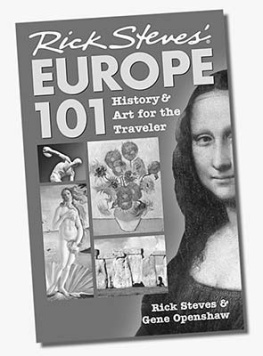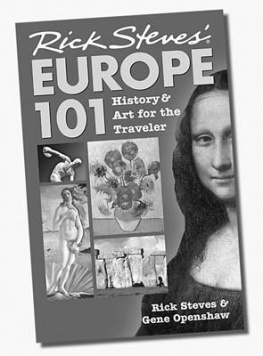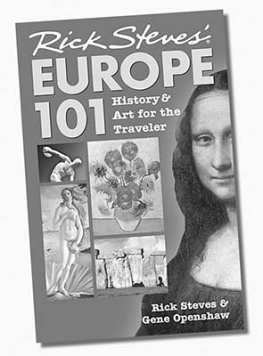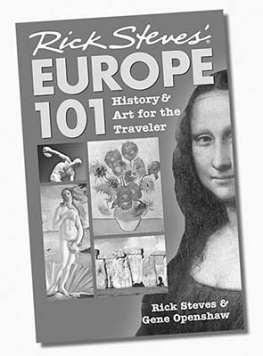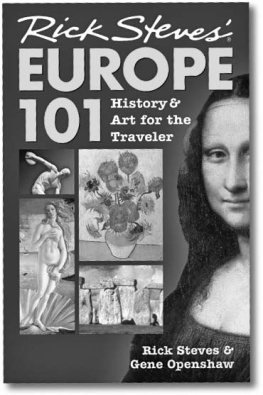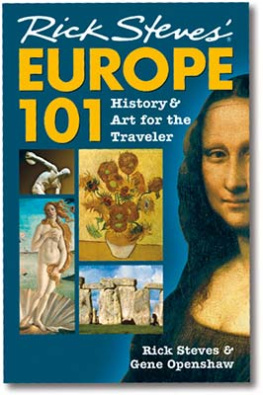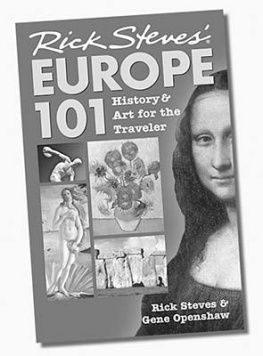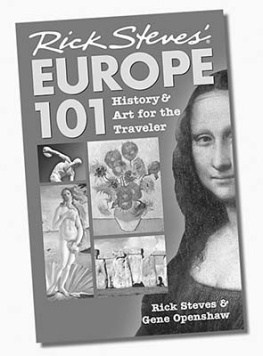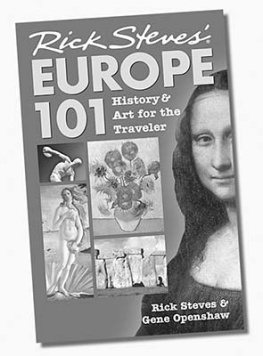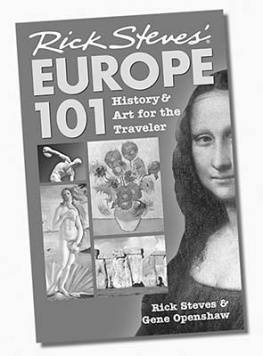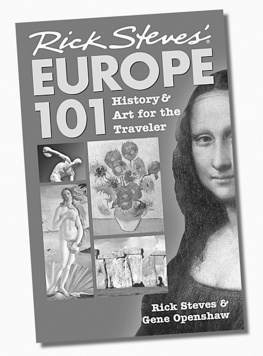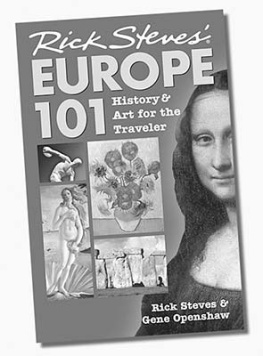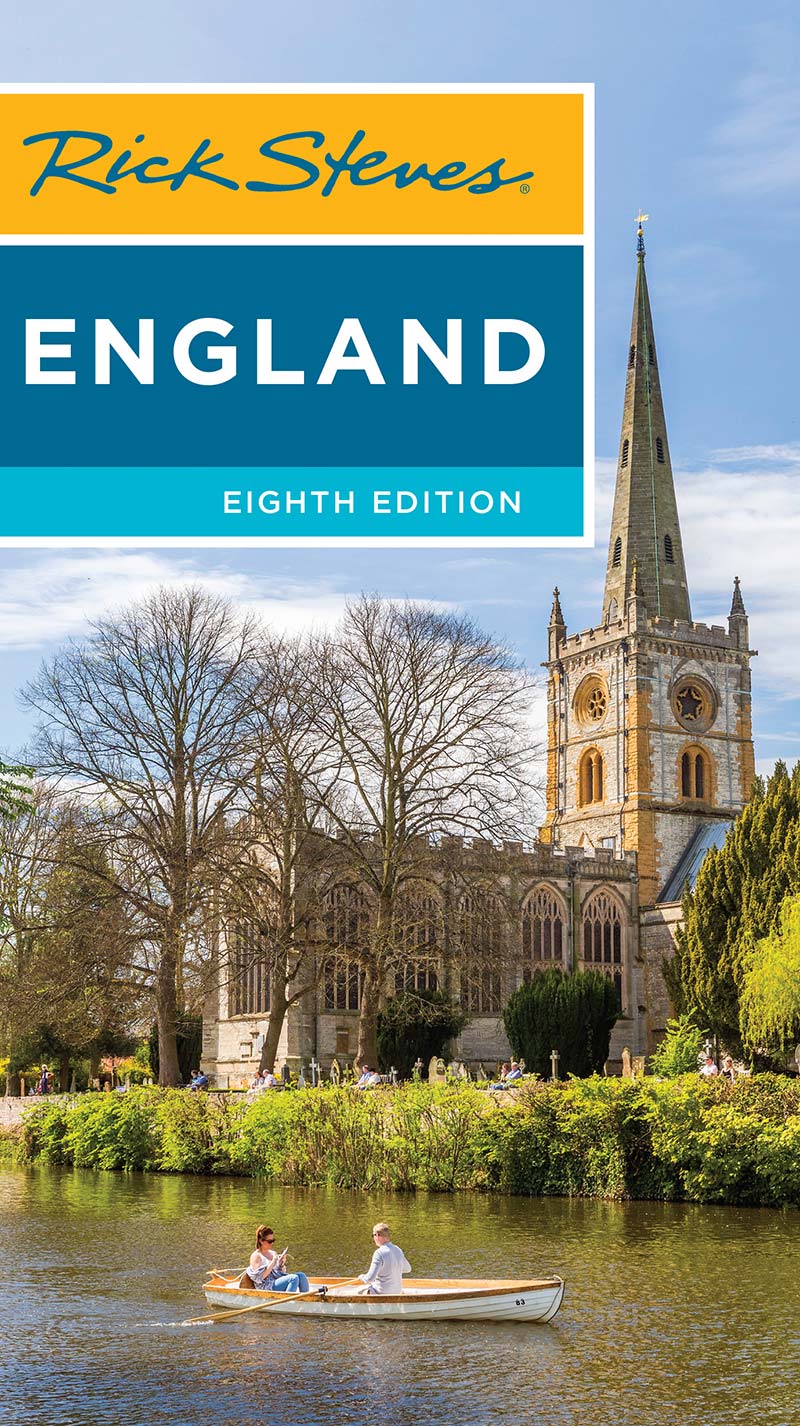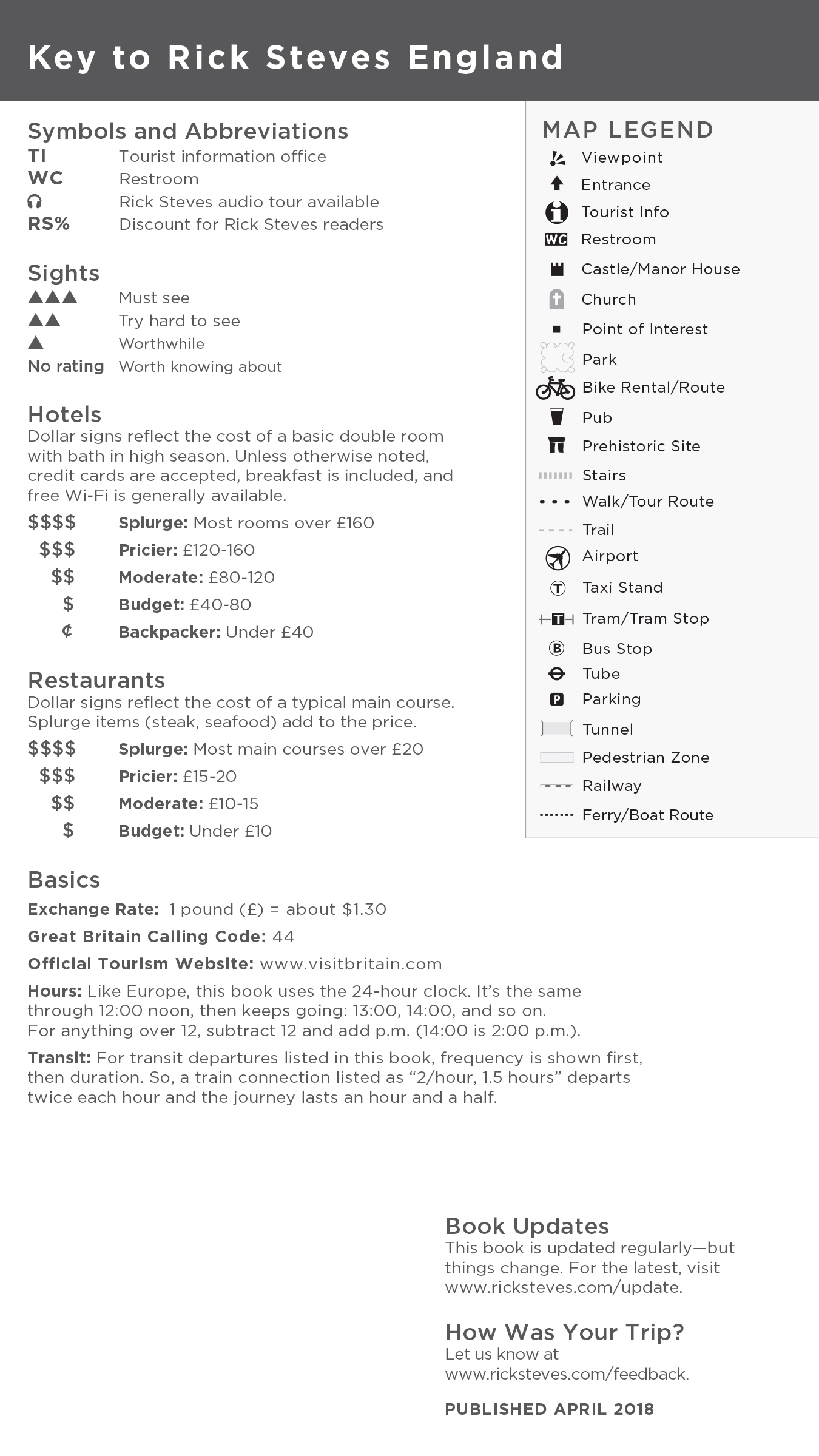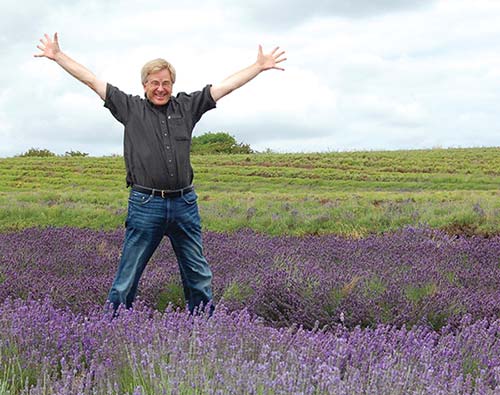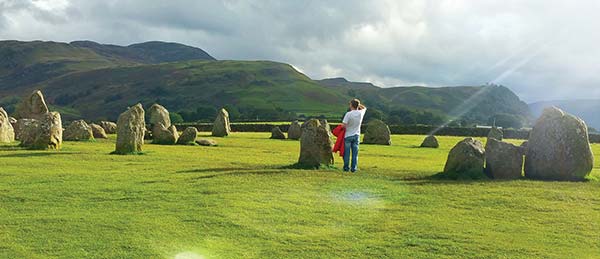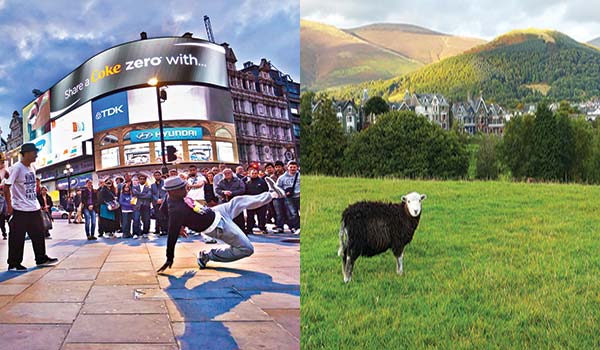Contents
Contents
Rick Steves
ENGLAND
Welcome to Rick Steves Europe
Travel is intensified livingmaximum thrills per minute and one of the last great sources of legal adventure. Travel is freedom. Its recess, and we need it.
I discovered a passion for European travel as a teen and have been sharing it ever sincethrough my tours, public television and radio shows, and travel guidebooks. Over the years, Ive taught thousands of travelers how to best enjoy Europes blockbuster sightsand experience Back Door discoveries that most tourists miss.
This book offers you a balanced mix of Englands biggies (Big Ben and Stonehenge) and more intimate locales (windswept Roman lookouts and nearly edible Cotswolds villages). And its selective: There are dozens of hikes in the Lake District; I recommend only the best ones. My self-guided museum tours and city walks give insight into the countrys vibrant history and todays living, breathing culture.
I advocate traveling simply and smartly. Take advantage of my money- and time-saving tips on sightseeing, transportation, and more. Try local, characteristic alternatives to expensive hotels and restaurants. In many ways, spending more money only builds a thicker wall between you and what you traveled so far to see.
We visit England to experience itto become temporary locals. Thoughtful travel engages us with the world, as we learn to appreciate other cultures and new ways to measure quality of life.
Judging from the positive feedback I receive from readers, this book will help you enjoy a fun, affordable, and rewarding vacationwhether its your first trip or your tenth.
Have a brilliant holiday! Happy travels!
From the grandeur and bustle of London, to the pastoral countryside that inspired Wordsworth, to some of the quaintest towns youll ever experience, England delights. Stand in a desolate field and ponder an ancient stone circle. Strike up a conversation just to hear the Queens English. Bite into a scone smothered with clotted cream, sip a cup of tea, and wave your pinky as if its a Union Jack.
England, with a population of 55 million, is the center of the United Kingdom in every way: home to four out of five UK citizens, the seat of government, the economic powerhouse, the center of higher learning, and the cultural heart.
All of this is contained in a hilly land about the size of Louisiana (50,350 square miles), occupying the southern two-thirds of the isle of Britain. Scotland is to the north, the English Channel and France are to the south, and Wales is to the west. Englands highest mountain (Scafell Pike in the Lake District) is 3,206 feet, a foothill by our standards. Fed by ocean air, the climate is mild, with a chance of cloudy, rainy weather nearly any day of the year.
South England, including London, has always had more people and more money than the north. Blessed with rolling hills, wide plains, and the Thames River, in the past this region was rich with farms and its rivers flowed with trade. Then and now, high culture flourished in London, today a thriving metropolis of eight million people.
North England tends to be hilly with poor soil, so the traditional economy was based on livestock (grazing cows and sheep). Known today for Englands most beautiful landscapes, in the 19th century it was dotted with belching smokestacks as its major cities and its heartland became centers of coal and iron mining and manufacturing. Now its working-class cities and ports (such as Liverpool) are experiencing a comeback, buoyed by tourism, vibrant arts scenes, and higher employment.
Bustling London offers nonstop entertainment while Englands countryside provides a tranquil retreat.
Englands economy can stand alongside many much larger nations. It boasts high-tech industries (software, chemicals, aviation), international banking, and textile manufacturing, and is a major exporter of beef. England is an urban, industrial, and post-industrial colossus, yet its farms, villages, and people are down-to-earth.
You can trace Englands illustrious history by roaming the countryside. Prehistoric peoples built the mysterious stone circles of Stonehenge and Avebury. Then came the Romans, who built Hadrians Wall and baths at Bath. Viking invaders left their mark in York, and the Normans built the Tower of London. As England Christianized and unified, the grand cathedrals of Salisbury, Wells, and Durham arose. Next came the castles and palaces of the English monarchs (Windsor) and the Shakespeare sights from the era of Elizabeth I (Stratford-upon-Avon). In following centuries, tiny England became a maritime empire (the Cutty Sark at Greenwich) and the worlds first industrial power (Ironbridge Gorge). Englands Romantic poets were inspired by the unspoiled nature and time-passed villages of the Lake District and the Cotswolds. In the 20th century, the gritty urban world of 1960s Liverpool gave the world the Beatles. Today London is on the cutting edge of 21st-century trends. Its a world in itself, with monuments (Big Ben), museums (the British Museum), royalty (Buckingham Palace), theater, and nightlife, throbbing with the beat of the global community.
In Britain, a pub is a home-away-from-home. Spend some time in one and youll have your finger on the pulse of the community. These cozy hangouts are extended living rooms, where locals and travelers alike can eat, drink, get out of the rain, watch a sporting event, and meet other people.
Britains pubs are also national treasures, with great cultural value and rich history, not to mention good beer and grub. Crawling between classic pubs is more than a tipsy night outits bona fide sightseeing. Each offers a glimpseand a tasteof traditional British culture.
Pubs odd names can go back hundreds of years. Because many medieval pub-goers were illiterate, pubs were simply named for the picture hung outside (e.g., The Crooked Stick, The Queens Armsmeaning her coat of arms).
The Golden Age for pub-building was in the late Victorian era (c. 18801905). In this class-conscious time, pubs were divided by screens (now mostly gone), allowing the wealthy to drink in a more refined setting. Pubs were really public houses, featuring nooks (snugs) for groups and clubs to meet, friends and lovers to rendezvous, and families to get out of the house at night.

